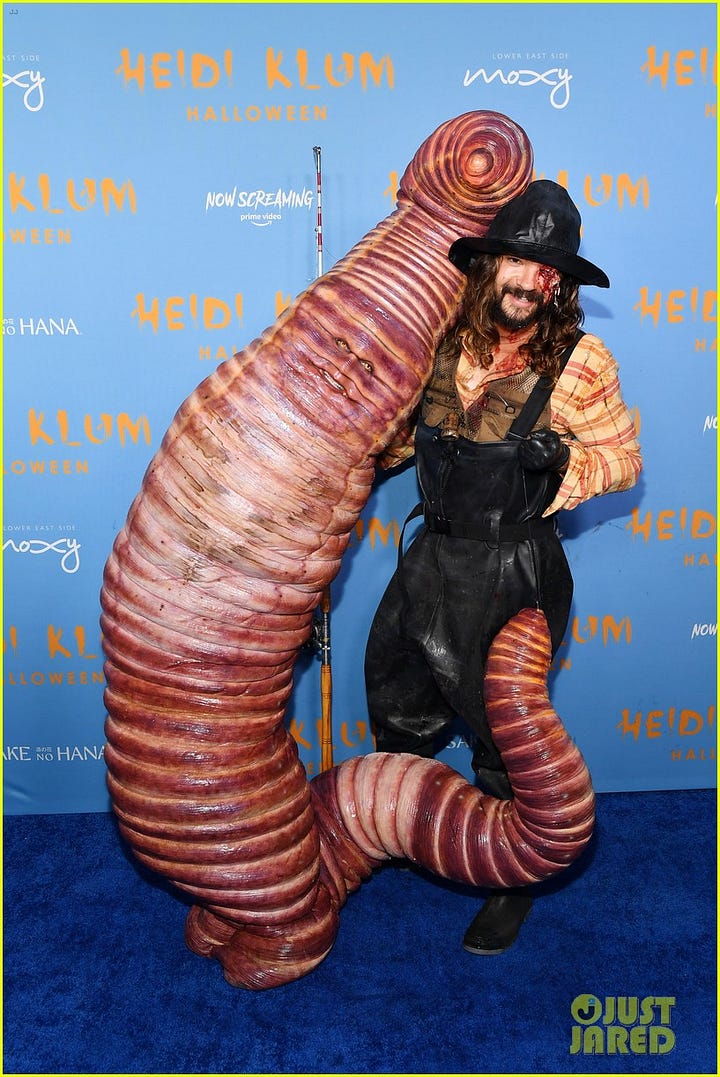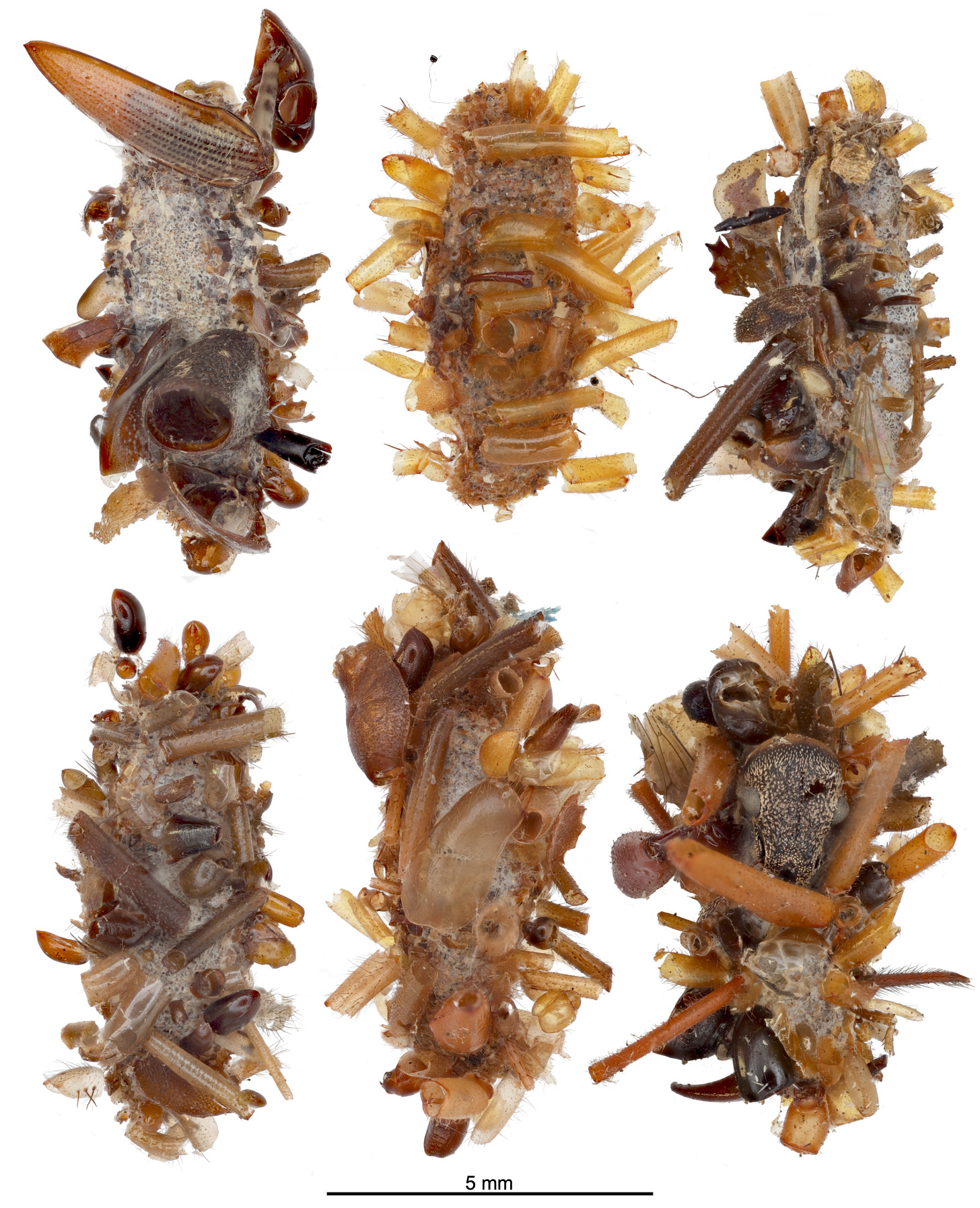by Richard Conniff

Years ago, I proposed to Smithsonian magazine, where I was a frequent contributor, that I write a feature story about moths. Don Moser, then the top editor, loved wildlife stories. He had already assigned me to write several other stories that year about insects, though he also muttered that he wished I would “write about something bigger than a postal box.” But moths, he said, were just creepy. Something about their night-flying way of life made him shudder. Maybe saying out loud made him realize it was a story, after all, and he gave me the go-ahead. So I am dedicating this piece to Mr. Moser’s memory, because the latest moth discovery, reported in this week’s issue of the journal Science is honest-to-god creepy. But like so many things about insects, it is strange and wonderful in equal measure.
On the Hawaiian island of Oahu, a rare carnivorous moth caterpillar, previously unknown to biologists, stalks spiderwebs for food. Just being a carnivore would be odd enough, since 99.9% of the roughly 200,000 known moth and butterfly species are herbivores, feeding exclusively on plant parts. But being a carnivore in a spider web? Moths and butterflies routinely die in spider webs. They have never been known to dine there, until now.
The new caterpillar is a member of a moth genus, the Hyposmocoma, known only from Hawaii. Most of its several hundred cousin species go about their lives politely eating plants. But it’s also an extraordinarily diverse genus. A few Hyposmocoma species have evolved, for instance, with caterpillars that spin silk in the spider manner, and use it to capture snails. Then they climb inside and eat the living mollusk.
The new discovery takes that behavior up a notch. As this caterpillar roams around inside a cobweb, typically in an enclosed space like the interior of a rotten log, it finds weakened or dead insects snared in the web, including some the spider has already wrapped in silk for future meals. And it eats them.
What’s even stranger is that the caterpillar also salvages inedible body parts from the dead and dresses up in them. The head of an ant, say, or the abdomen of a bark beetle, or even some of the spider’s own shed skin, become the caterpillar’s morbid armor. It actually sizes them and nibbles them down to fit precisely in place on its own body parts.
I am struggling to find any comparable display in the human world. Perhaps this indecipherable Lady Gaga costume from the “Born This Way” photo shoot? Or Heidi Klum dressing as a worm for Halloween 2022, hooked by her new husband, dressed as a fisherman?


But what the new Hyposmocoma achieves is much stranger and more otherworldly, except of course that it happens in real life, here on Planet Earth:
I know some of you are bouncing in your seats, eager to point out another human example: “Mister, mister! What about that movie starring Jodie Foster, a Death’s Head moth, and a central character who makes disturbing choices in female attire?” Yes, I thought of that. But I had to walk out of that movie because it was too creepy, the only time I have ever done that, and the discussion is now closed. I am shuddering.
Researchers first discovered the new Hyposmocoma species, which they have dubbed “The Bone Collector,” in 2008, while out Lepidoptera hunting in the steep forested mountains of Oahu. “We looked in a tree hollow,” says Daniel Rubinoff, an entomologist at the University of Hawaii and lead author of the new study, “and there was one of these bizarre sort of bags of bug bits.”
At first, they thought the costume might be an accident, a natural result of living in the messy circumstances of a tree hollow. It wasn’t until it happened again, says Rubinoff, that they realized, “wait a second, that one’s also totally covered in bug bits.”
Understanding the behavior took time, because bone collector caterpillars turned up only two or three times a year on average, for a total of just 62 seen so far. “And when you dig through a rotten log,” Rubinoff adds, “you destroy the spider web, and the spider runs away. So you don't have that cue that it was hanging out with a spider, until you've done this enough times, and ‘wait a second, there's always webbing around here.’ Then you start opening logs more carefully and looking for the spider. And then, ‘Oh my God, these things are always hanging out with spiders. They're always covered in bug bits. That's a thing.’”
Eventually, they found enough examples that they were able to design experiments asking whether the caterpillars could live apart from spiders, or without their covering of body parts. “And we realized that this is not an optional thing. It's obligate.”
Rubinoff suspects that the bug parts are a macabre camouflage. “It's like if you were living in a lion's den, and you could cover yourself in the bones of impala. The lion is gonna assume that you're just a bunch of bones and leave you alone. So not only is it something they do, it is, I think, critical to the caterpillars’ survival that they are covered in bits of dead arthropod. In fact, they also use the integument of the shed skins of the spider because it completely conceals their identity.”
One final quirk: When one bone collector caterpillar encounters another, it isn’t deceived by the lookalike costume. Instead, it bites the intruder in the side and then cannibalizes it. You can check out the video on Youtube.
Oddly, the new study doesn’t give the bone collector a proper species name. That will happen in a separate taxonomic description. But genetic data indicate that it split off from other Hyposmocoma about five million years ago, meaning that it is older than the oldest present-day Hawaiian island. It probably first evolved, says Rubinoff, on one of the outlying volcanic islands that later collapsed leaving only a basaltic stump. But the moth somehow made the leap to the new island of Oahu. He theorizes that a separate bone collector species also made it to the island of Kauai and went extinct in relatively recent times.
That may also be the fate of their new discovery, Rubinoff and his co-authors warn. The bone collector now survives in just one 15-square-kilometer patch of mountain forest on Oahu. While it’s technically protected as state forest land, the Hawaiian reality is that the habitat is being slowly replaced, and thus destroyed, by non-native flora and fauna. Protecting the species long term “would require a desire to control things like feral pigs” and invasive ants, says Rubinoff. “to plant native plants, to start restoring the forest to predominantly native-dominated habitat. And there is a lack of will, probably from a lot of the public, and therefore from government, to fund those kinds of things.”
Why should the Hawaiian public at large care about a species as quirky as the Bone Collector? The implied question is: Does it have a use or fill a need? Rubinoff puts his answer in the context of the modern tendency to question science and its broader value to society. “Science doesn't work in a linear way, and it isn't a transactional event,” he says. “Things don't happen just when we're looking for them … Star Trek is a great series, but it really made science seem like a short order cook, where they need to figure out how to make an alternative dilithium crystal, and then they spend 20 minutes doing it and figure it out. Yeah!
“But really, most of the time, what we do is bumble around discovering things and then the light goes on later.” Go in for surgery, for instance, and you may learn that the glue used to hold your incision together was modeled on the stuff barnacles use to fasten themselves to tidal rocks. That discovery didn’t happen, says Rubinoff, “because we sent people out to find something to do surgery with. We allowed people to study barnacles, and in the process of doing that, discovered something that's really useful." We have no idea if the Bone Collector species will also somehow prove useful later on. Common sense merely says to hang onto it, just in case.
University of Florida entomologist Akito Y. Kawahara, who did his post-doctoral research on Hawaii (but was not involved in the present study), adds that it isn’t just about what’s useful to humans. Protecting one species often ends up protecting many other species, too. “Other micromoths in Hawaii, such as the leaf mining moths in the genus Philodoria, are thought to be pollinators of some very rare plant species. One plant species is known only from five individual trees left on the entire planet. The moth is thought to be needed to pollinate the plant and all of the animals that rely on it.”
Neither scientist mentions it. But there is also something larger at stake than usefulness. If the Hyposmocoma species blink out one by one, taking with them all their individuality, their quirkiness, and even their creepiness, it may not seem like an important failure at first. Bigger, more charismatic Hawaiian species are also vanishing forever from the islands, or are on the brink of vanishing. But people have things to do and places to go, and it can be hard to keep track, or to care about the loss of native plants, say, when their replacements from almost any place else on Earth are just as pretty. Sooner or later, though, if they have eyes, a soul, and time to stop and think, it may hit them: What they are losing is Hawaii.
Postscript: Don Moser’s decision worked out. That year, Smithsonian won a National Magazine Award, its first, for three of my insect stories, including the one about moths. Those stories became the basis for my book Spineless Wonders: Strange Tales of the Invertebrate World (Henry Holt), which is now available as a kindle eBook for $4.99.





Well. That's just about the weirdest insect behaviour I've ever heard of. Honest-to-god creepy, strange, and wonderful, indeed. Great article!
Enjoyed this piece a lot. Heard about this critter on NPR while driving today-but from you first.
My favorite quote is “ Science is not transactional “. Maybe that’s why our president wants to cancel it.